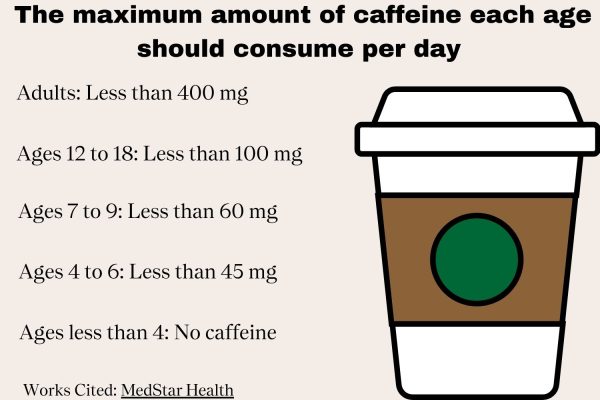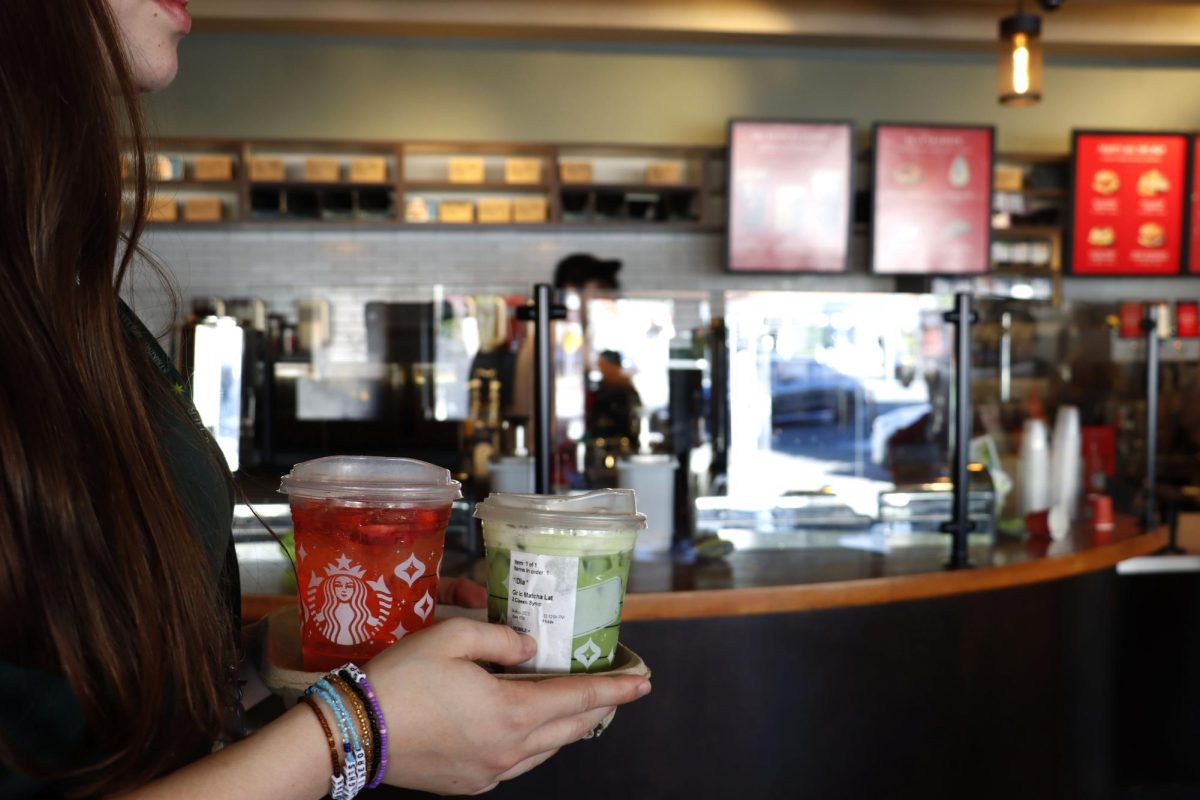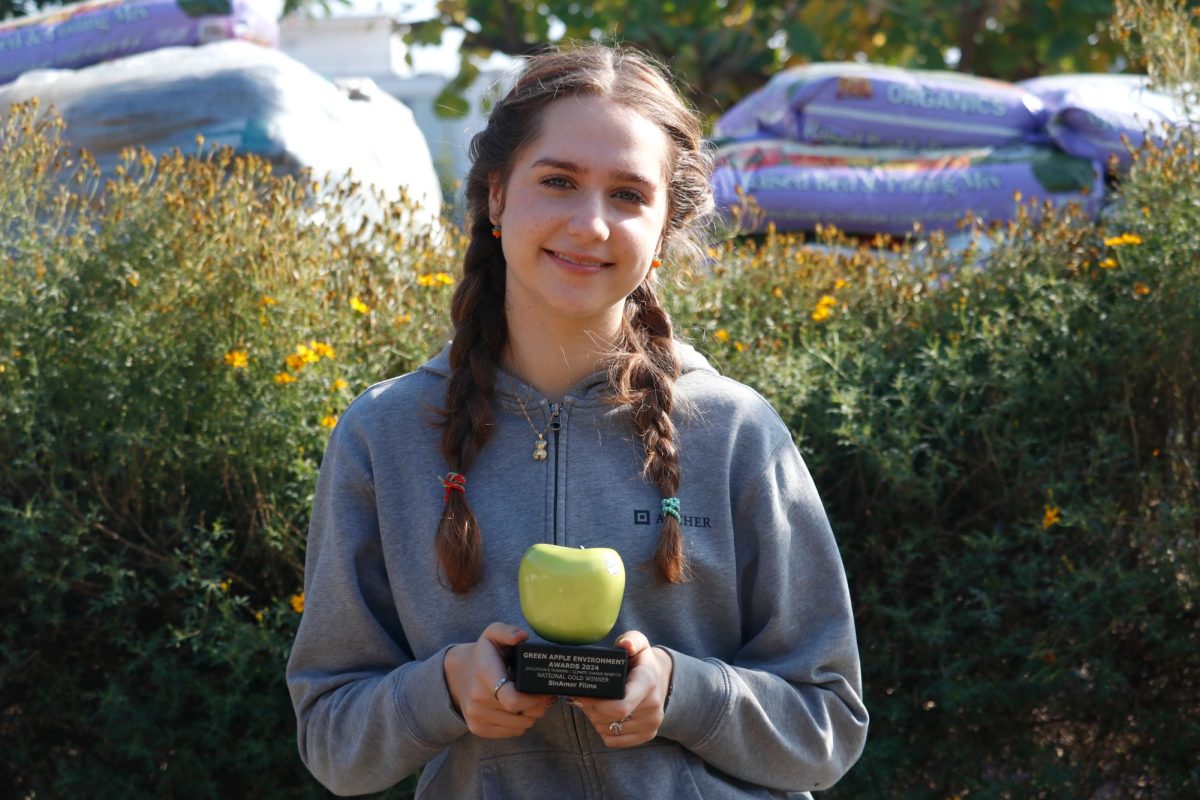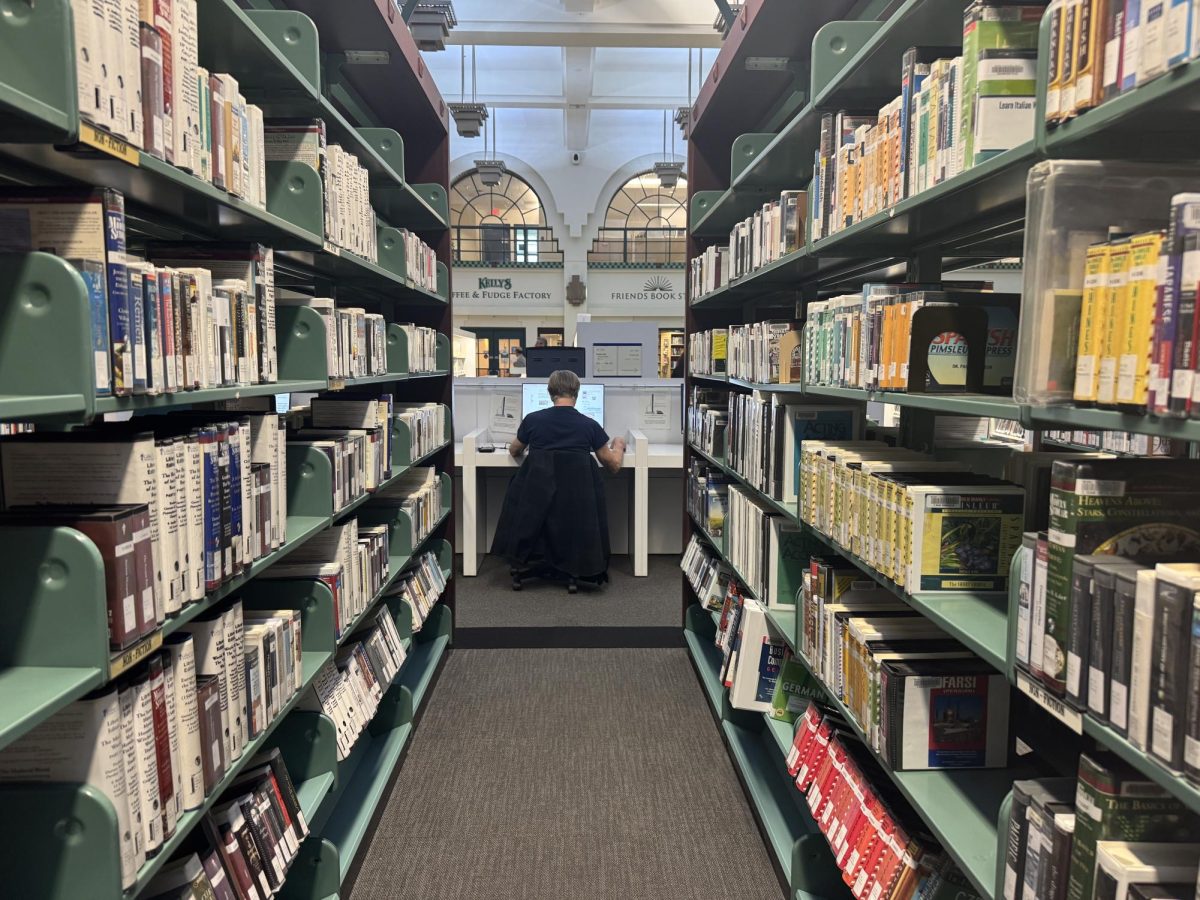In the interest of full disclosure, former Vice President of Sales at Coca-Cola Matt Vernon is a family friend of this reporter.
When arriving to school on an average Monday morning, many students walk to class holding a Starbucks drink with several shots of espresso in their hand; the strong ambrosia of coffee overwhelms first period classrooms. When passing by a student opening their locker, several vibrant energy drinks sit inside. These habits surrounding high daily caffeine intake have proven to be damaging to a young person’s mental and physical condition.
According to Medical News Today, “statistics show that adolescents are the fastest-growing population of caffeine users. Studies have indicated that 83.2% of teenagers consume caffeinated beverages regularly, and at least 96% consume them occasionally.” However, it is not only coffee consumption that has grown, but also energy drink consumption.
When the energy drink market started up in the United States in 1949 with the launch of an energy drink called “Dr. Enuf,” it was not nearly as popular as new energy drinks are today. An article from the New York Times found over the past five years, the sales of the energy drink market have “[surged] to $19 billion from $12 billion.”
Former Vice President of Sales at Coca-Cola Matt Vernon worked at Coca-Cola for 25 years and continues to work in the beverage industry today as a managing partner and co-founder of a beverage company called Slurrrp. He said he has observed an increase in the amount of caffeine going into drinks and in the promotion of caffeinated drinks.
“Caffeine in energy drinks has increased over the years, with some having 300 mg in a 16 oz drink,” Vernon said.
According to the Pew Research Center, advertisements are influencing teenagers to purchase and consume more caffeinated beverages like energy drinks, contributing to caffeine addiction and dependence at a young age.
Archer Students’ Caffeine Intake
During lunchtime, Archer students often wait to scan themselves out with their One Cards to go across the street for food and drinks with their friends. Archer grants sophomores, juniors and seniors “across the street” privileges that allow them to get food and drinks from restaurants or cafés within walking distance from Archer.
Some of the places where students can purchase caffeinated drinks include Starbucks, Chevron and Belwood Bakery. Some sophomores, juniors and seniors also pick up drinks for friends in younger grades. Due to these privileges, upper school students have easy access to caffeinated beverages daily, which likely impacts how much caffeine students consume on a daily basis.
Sophomore Serenity Jones said she started consuming caffeinated drinks regularly when she was 13. Jones said she consumes up to 600 mg of caffeine daily, which is above the recommended 400 mg average caffeine intake for adults and 100 mg for teenagers. Jones said she was mainly influenced to consume caffeine more often because of social media influencers.
“I feel like social media definitely plays a big part of it because influencers … make it seem like it’s the best drink ever,” Jones said. “Then we consumers end up buying it and if we think it’s kind of good, we just keep getting it just to feel like we did something for ourselves even though we were clearly influenced by social media influencers [and] the people around us.”
Jones said she usually enjoys energy drinks like Red Bull and C4. As both the energy drink and coffee market have risen in popularity, so has the presence of caffeinated drinks on social media, a place where many adolescents are. Large companies like Starbucks have been putting more spending into advertising their products that include caffeine. Therefore, teenagers see caffeinated product advertisements more frequently because advertising has increased on social media as a whole.
Sophomore Sasha Capatori-Poole said she normally drinks a coffee from Starbucks once a week. When asked if she thinks social media impacts caffeine consumption in teenagers, Poole also said advertisements on social media have a strong influence on the decisions of younger audiences.
“I’ve noticed there’s a lot of advertising on billboards and in stores for Starbucks,” Poole said. “A lot of people are listening to those advertisement sources, which brings in more money for those companies, [making] them invest their money into those things as well.”
Poole gets a tall coffee with two shots of espresso because she said one shot does not affect her and said drinking caffeine leaves her feeling energized and focused. Eighth grader Josephine Hatton said she normally does not consume any caffeinated drinks but notices her friends and peers doing so frequently. When asked about why she thinks her classmates consume caffeine, she said they may want more energy, similarly to Poole, or think having caffeine will improve their academic performance.
“I think sometimes they might need to feel more energized or [think] maybe if they have caffeine, they might do better in school because [of] the mindset that of having caffeine makes them do better,” Hatton said.
Effects of Caffeine
A few of the negative effects of teenagers drinking caffeine include an increased likelihood of insomnia, dental problems and raised blood pressure. Dr. Amy Jean specializes in pediatric endocrinology and is an employee at the University of Pittsburgh Medical Center. Jean said she has observed several of these harmful side effects of caffeine in her patients.
“Caffeine acts as a stimulant — [people] get shakiness in their hands [or] palpitations in their heart because as soon as you drink it, it goes across your whole body,” Jean said. “It doesn’t just hit the brain, it hits the heart, and it hits the nervous system. That’s the dangerous thing … I’ve had kids that took a true energy drink, and they had to go to the emergency room because their heart was racing that fast.”
These symptoms are damaging to adolescents especially, as they are still growing. Ingesting large amounts of caffeine can stunt adolescents’ mental and physical growth. Jean said this is because caffeine begins to replace the intake of products like milk that contain vitamins critical to bone growth.
“Growth is as important as protein intake. If you look at the trends of drink habits, a lot more kids and teenagers [are] drinking much less milk,” Jean said. “Milk has the importance of calcium for your bones, and vitamin D for your bones and protein. But if you’re switching that now to a delicious Starbucks drink, you’re not getting enough milk.”
There can be momentary benefits to drinking caffeine in teenagers, only if consumed in moderation. Some of these include increasing alertness and attention and momentarily reducing headaches. However, if caffeine is consumed frequently, the majority of the side effects of caffeine are harmful and negative.

According to the Federal Drug Administration, the harmful side effects can be avoided if parents monitor their own caffeine intake, their kid’s intake and when their kid begins drinking caffeine. Similarly, Poole said she thinks everyone should manage their own caffeine consumption.
“In small proportions, it’s okay. I don’t think it’s good to drink a lot of caffeine often, but I think a small amount — maybe once a week or once every two weeks is okay for you.”
Due to the full-body effects caffeine has on adolescents, Jean said she always makes sure to check in with a patient about their caffeine consumption to understand how their health may be affected.
“When I take a history of a new patient,” Jean said, “I always ask them what they are drinking every day, how [many] caffeine drinks they are drinking and how [many] sugary drinks they’re drinking.”
Jones said she and her peers continue to consume high amounts of caffeine daily due to societal pressures.
“A lot of people around me drink a lot of caffeine, which is obviously unhealthy and not good for your body, but we do it anyway,” Jones said. “I feel like it’s some type of pressure from society — everyone drinks coffee from Starbucks, everyone goes to these places, so I feel like we’ve all adapted this and made it a part of us.”












Anne A Meyers • Dec 9, 2023 at 6:00 am
Thank you for this illuminating article. Have always wondered about the consumption and effects of these super sugary, high calorie drinks served at Starbucks too. Have a great holiday break with less caffeine and see if you are sleeping and feeling better!